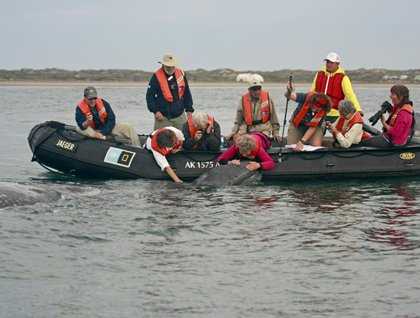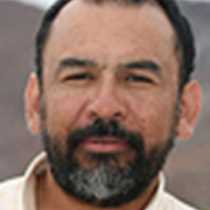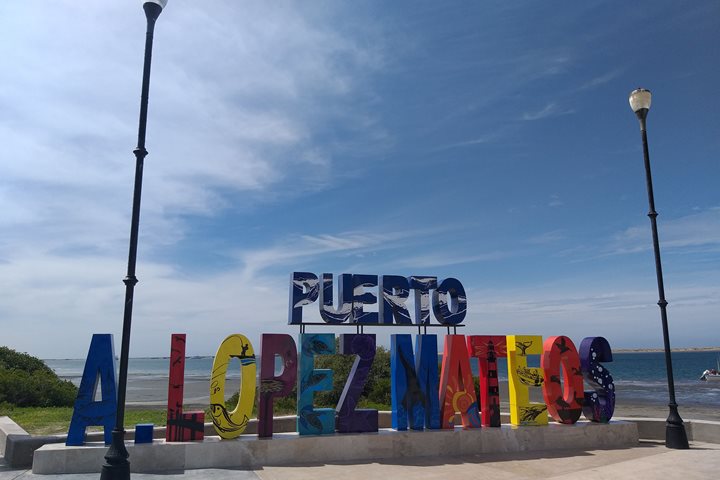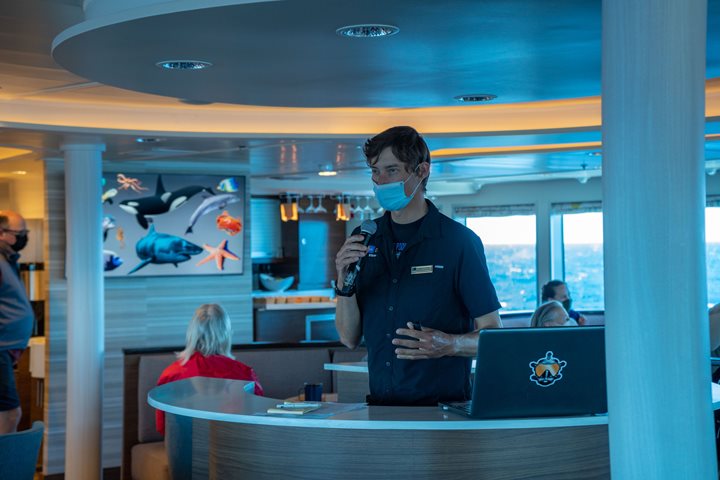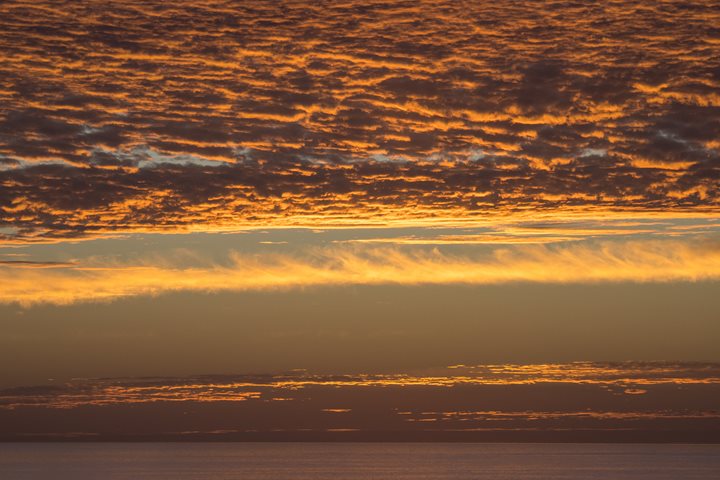The fabulous ecosystem of Magdalena coastal lagoon, with the long and narrow barrier islands full of sand dunes and pioneer plants; its mangroves with winding channels; its green, biologically rich but calm water; its gray whales; and thousands of birds like gulls, frigates, pelicans, and cormorants were all revealed in plenitude as the first morning light started to fall on the place. A bit of humidity in the atmosphere made everything look pale or blurred. Inside this natural picture we (guests and naturalists) ventured on early morning whale watching rounds aboard our expedition landing craft. Gray whales were present around the National Geographic Sea Bird near Boca de la Soledad, the northern entrance. Most of them were cow and calf units, but single, performing mating pairs, in an unexplained association with bottlenose dolphins were seen as well. Most gray whale cows were very protective of their tiny calves and behaved elusively, but some, with older ones, approached our boats and started to interact with the delighted crowd of guests and staff. They were very friendly! After waves of ecstasy provoked by the experience of touching the gray whales (there were many tears of joy too!) we finally left them and returned back to our floating, temporary home—the vessel. The anchor was weighed and we navigated to the south, inside the Canal de La Magdalena.
Along the canal there was a display of life: on the mangrove trees ospreys, varied egrets and herons, kingfishers and more, perched on higher branches. Frigatebirds were seen in paired courtship aerial displays while white ibises peeped on the muddy shores. Migratory wading birdies rested on the sandy beaches; and dolphins in the water also appeared. Later, before abandoning the canal, a final landing was organized. Once on land and before departing for walks on the magnificent dunes of Magdalena Island, the exploring parties contemplated an unparalleled nature’s performance: over the water, thousands of double-crested cormorants flew from the southern entrance to the canal, swirling like a huge, black hurricane. The huge moving mass followed schools of fish that swam close to the surface, as derived from the cycles of diving and flying each individual bird was undertaking, many came out of the water with fish in their beaks. Pelicans and gulls also participated. After minutes of enchantment, the mass moved away until we were not able to see it on the horizon.
Everything we experienced in a week of exploration in the Gulf of California and Magdalena Bay was only a small demonstration of the continuous acts of supreme creation by Nature.

